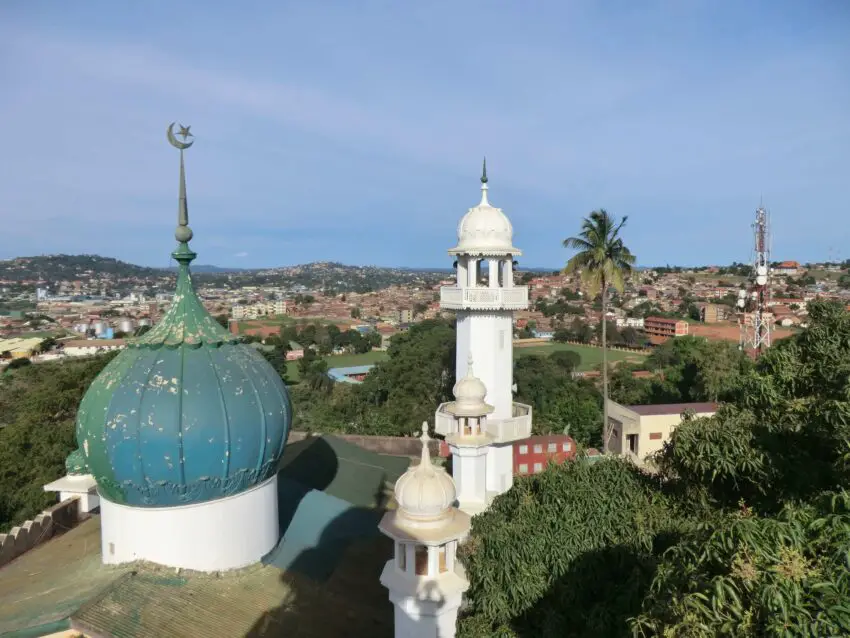Huge Kampala formed a stark contrast to the sleepy towns and amazing nature we encountered in upcountry Uganda. Loud, dusty and slightly chaotic, it took some getting used too. However, after seeing the many remains of the country’s fascinating and turbulent history, we found a new apprecation for the city.
Traces of the Buganda Kingdom are scattered all over the city. Most famous are the historic UNESCO-listed Kasubi Tombs and the Bulange, the Kingdom’s still active Parliament Building. At the same time Uganda’s biggest museum offers a glimpse into the natural and cultural history of the country, while countless pretty mosques, churches and temples are a good reminder of Kampala’s religious diversity.
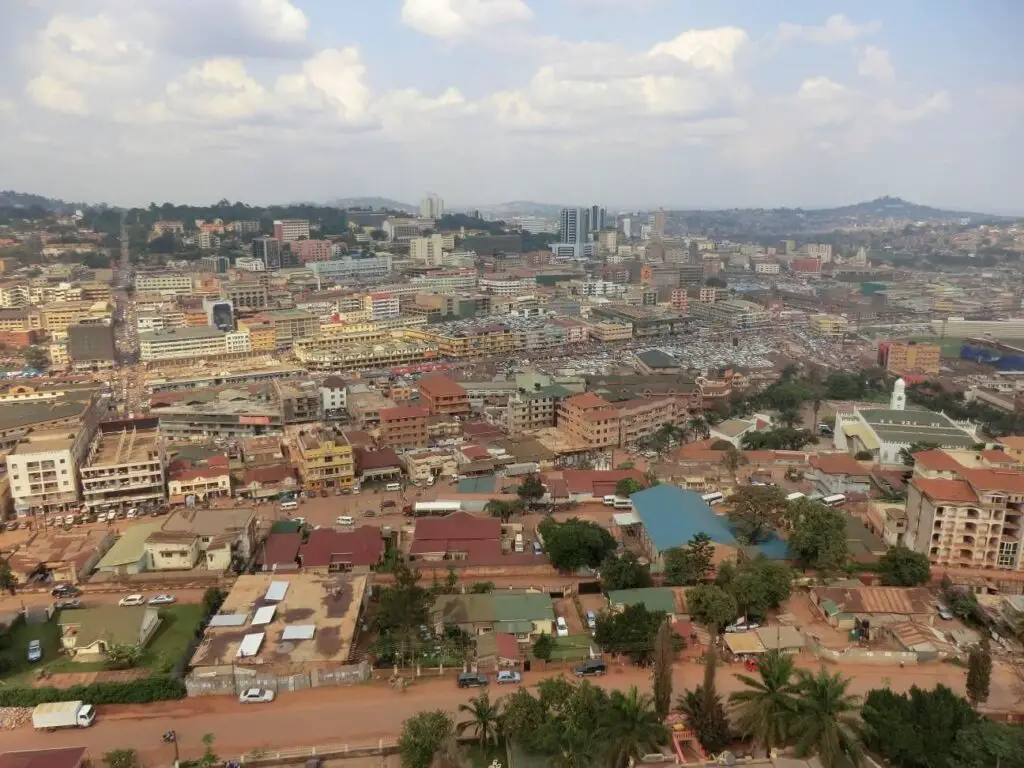
Unless you’re on a very tight schedule, I suggest spending at least a day in the city, to see a very different side of Uganda. Two days would be even better, so you’d be able to explore some more out-of-the-way sights attractions, like the peaceful Wamala Tombs on the outskirts of town.
Here’s my personal list of the best things to do in Kampala.
This post may contain affiliate links, and I might earn a small commission at no additional cost to you. For more info, click here.
10 Extraordinary Things to Do in Kampala, Uganda
Kasubi Tombs
The fascinating 19th-century Kasubi Tombs are the final resting place of four of the Buganda Kingdom’s Kabakas (Kings). Up until 2010 these arguably were Kampala’s star attraction. However, in this year the main building unfortunately burned to the ground, either as a result of an accident or arson (the jury’s still out on that one). Reconstruction has been going on ever since.
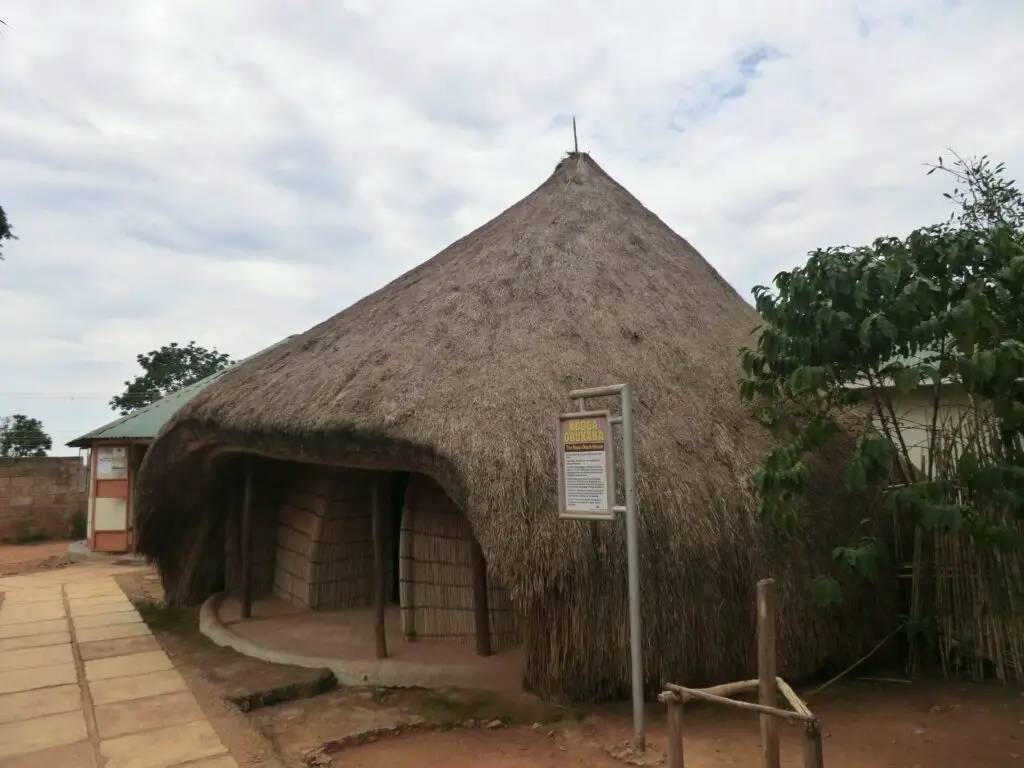
Even while the former grandeur of the thatched-roofed main tomb is still being restored, this is an interesting place to visit and learn about the history of the Kingdom. You’ll likely be accompanied by an enthusiastic guide explaining the significance of the place for the collective identity of the Buganda People.
Several smaller reed-decked buildings still stand, including the Royal Drum House and some subsidiary tombs containing the graves of the Kings’ Wives. There are also a few more modern looking structures that used to serve as their residences after the death of the respective king, as well as several graves of other members of the Royal Family.
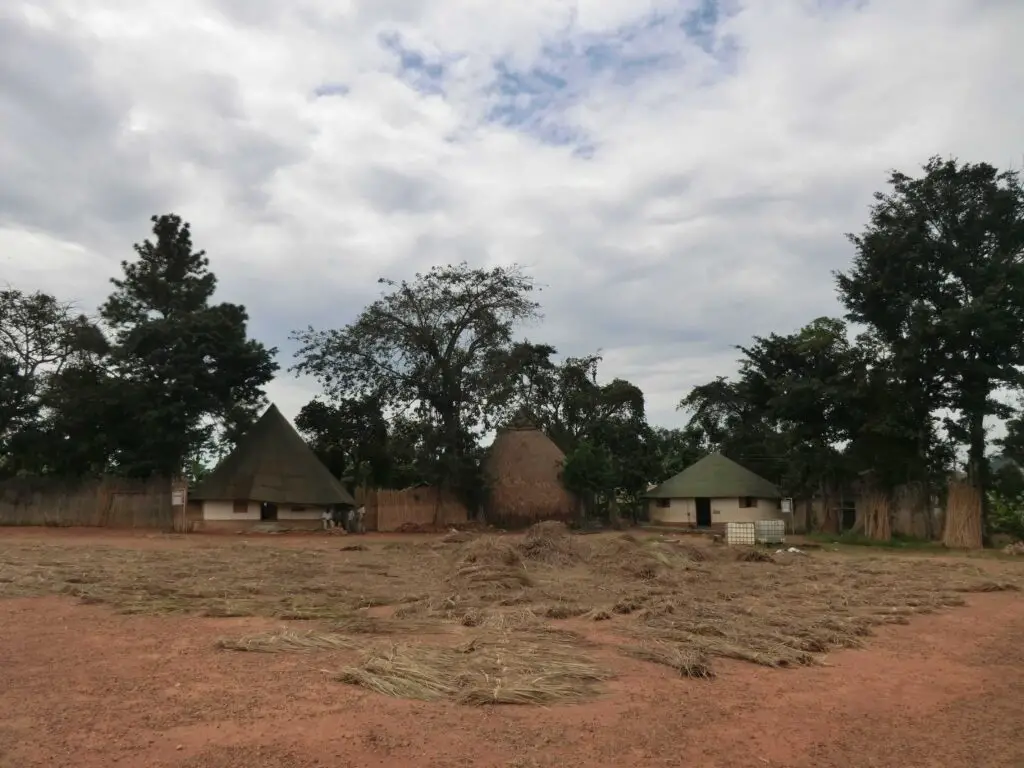
The tombs can be reached by matatu from Kampala’s old taxi park. Alternatively, you can flag down any minibuses headed for Hoima. The entrance fee is 30,000 Shillings.
Uganda Museum
Established in 1908, the country’s biggest museum is also said to be the oldest one in East Africa. It has a mix of displays about Uganda’s nature and culture, with a particular stress on ethnography.
There are tons of traditional tools and handicrafts, dresses and musical instruments, as well as some displays about Human Evolution and the country’s wildlife. The presentation may be a bit old-fashioned, but the objects and descriptions are quite interesting.
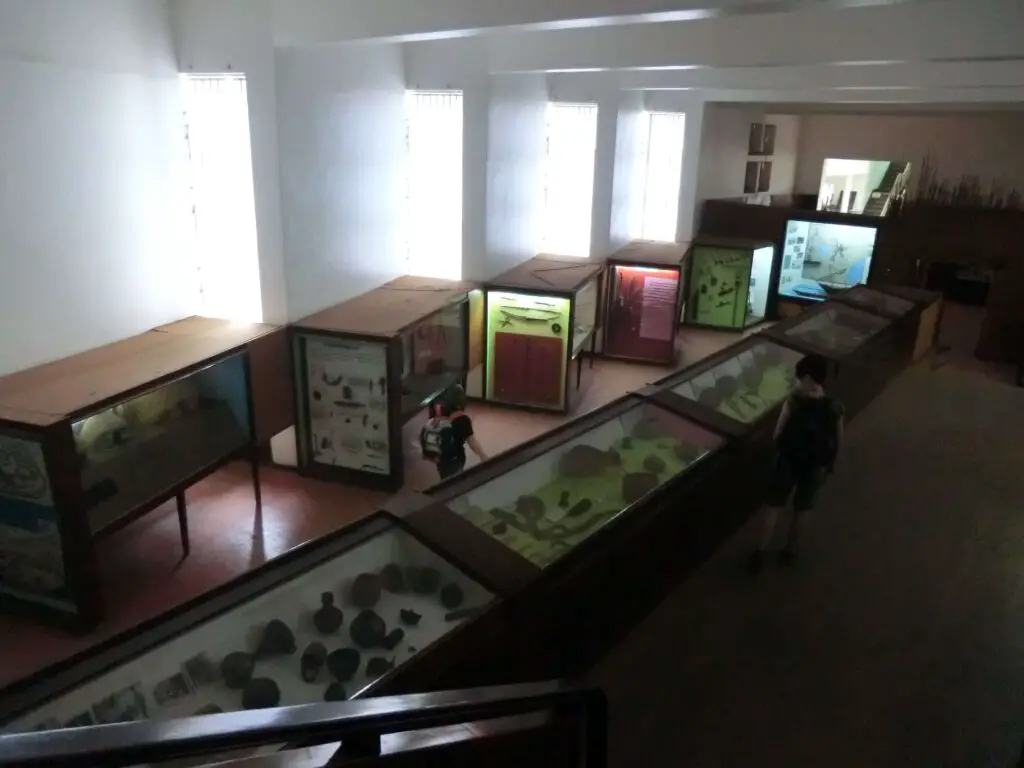
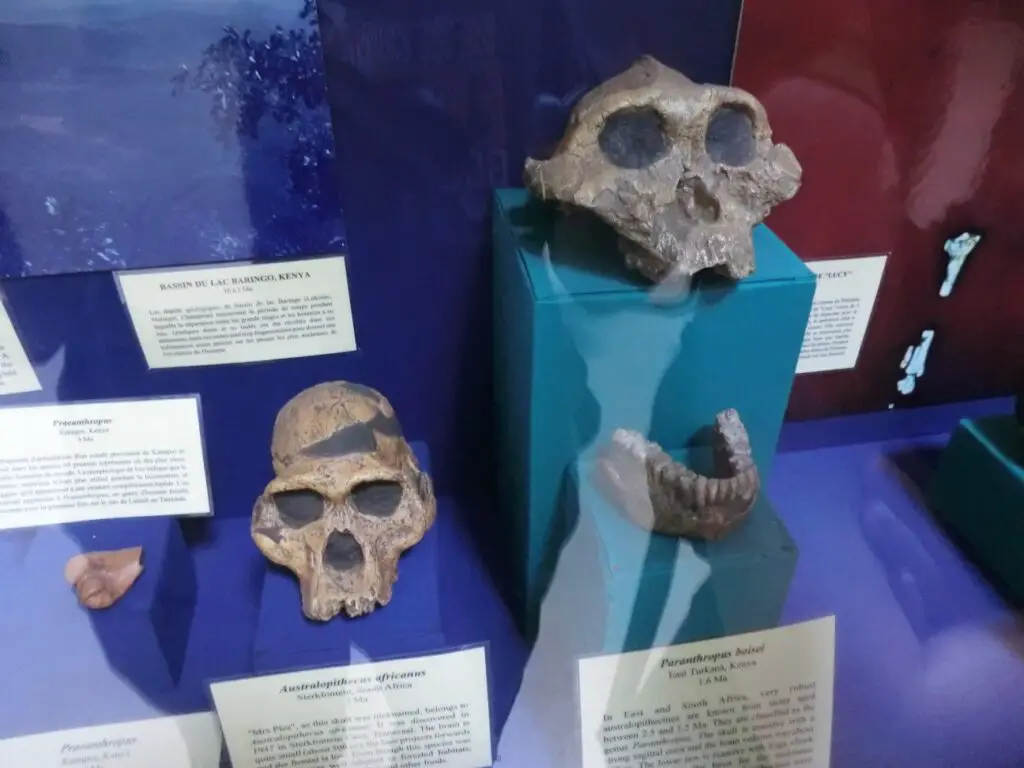
The museum can be found in the Mulago Neighbourhood north of the centre and reached by matatu from the old taxi park. The nearby Uganda Wildlife Authority is the place to go to sort out permits for the country’s national parks (including Gorilla Trekking Permits).
The Uganda museum is open daily from 9AM to 5.30PM. Re-Check the times here. The entrance fee is 15,000 Shillings.
Gaddafi National Mosque
Named after the former leader of Libya, who commissioned it as a gift to Uganda, this is East Africa’s biggest mosque. It’s an impressive building with a lovely interior, but the star attraction is the climb to the top of the Minaret, which offers amazing views over the city.
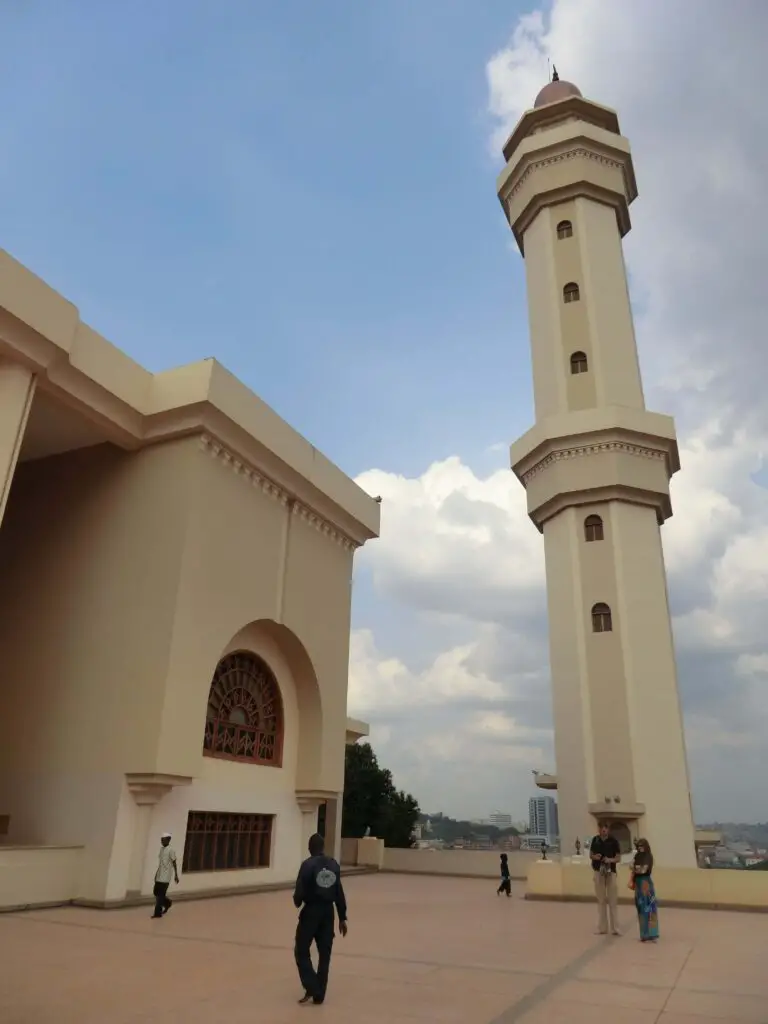

As is par for the course in religious buildings, modest clothing is required to enter the mosque. Female travelers might want to bring a headscarf to use as a hijab, although you might be able to borrow one at the entrance. There is no entrance fee, but a caretaker will likely show you around and expect a small tip. The mosque sits west of the old taxi park atop Old Kampala Hill.
Baha’i Temple
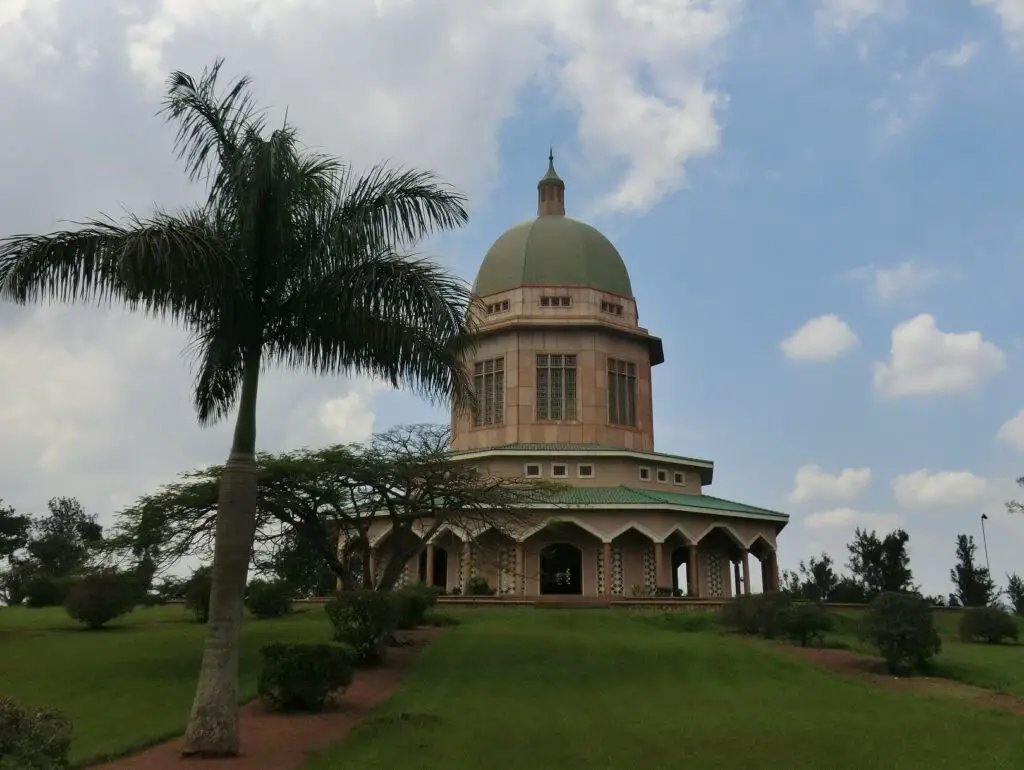
This is one of only a handful of temples around the world that are dedicated to the Baha’i Faith, which was developed in Iran in the 19th century. It’s a stunning work of architecture and located in beautiful gardens, but it’s also worth visiting to learn about this fascinating religion, which emphasizes the spiritual unity of all humankind and the oneness of all religions.
Wamala Tomb
Another King’s Grave, but contrary to the Kasubi Tombs, this older tomb is rarely visited and set in beautiful rural surroundings on the outskirts of Kampala. The small, thatched-roofed building houses a shrine containing the jawbone (believed to harbour the spirit) of 19th-century-king Kabaka Ssuuna II, who allegedly had 148 wives and 218 children.
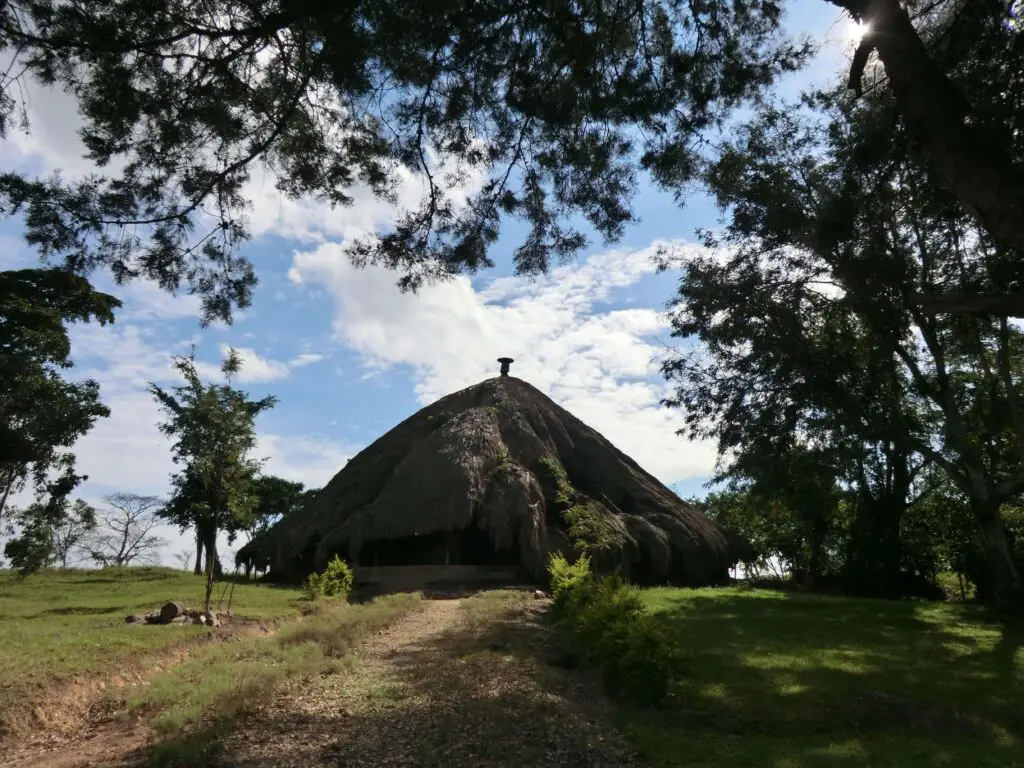
The shrine is decorated by an assortment of traditional spears and shields and maintained by the King’s descendants. The Wamala Tomb is located pretty close to the highway leading to Hoima, so matatus and buses going in this direction can drop you off on the main road, from where it’s a walk of about 30 minutes, or a bumpy boda-boda ride of about 10 minutes to the tomb. The entrance fee is 20,000 Shillings.
Mengo Palace (aka. Lubiri Palace)
This palace atop Mengo Holl in the Lubiri suburb is the residence of King Ronald Muwenda Mutebi II of the Buganda Kingdom. It’s rather new, as the original palace was destroyed in 1966, when Milton Obote took over the country and the Kabaka Mutesa II had to flee. As it’s again actively used by the King, you currently can’t visit the interior.
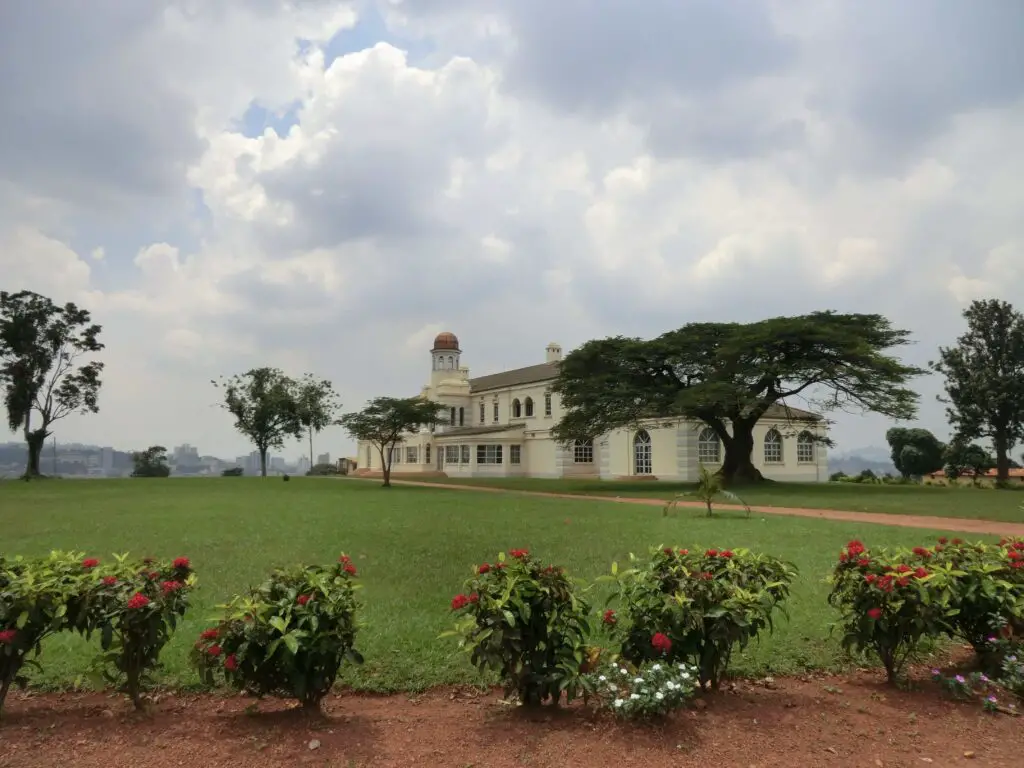
The new palace looks pretty enough, surrounded as it is by manicured lawns and flowering bushes. The peaceful atmosphere betrays the palace’s horrifying past, as the basement was used to imprison, torture and execute countless innocent people during the Idi Amin years.
The notorious prison cells can be visited with a guide, who’ll explain the history and point out various messages left on the walls by prisoners. We found it to be a haunting but ultimately important experience. A guided visit is 15,000 Shillings.
Kabaka Mwanga’s Lake
Next to Mengo Palace sits this artificial lake, which was dug on orders of King Mwanga II in 1880 to serve as a potential escape route during conflicts with the British Empire. The planned canal to Lake Victoria never materialized, but today Uganda’s largest man-made lake is a nice destination for a stroll.
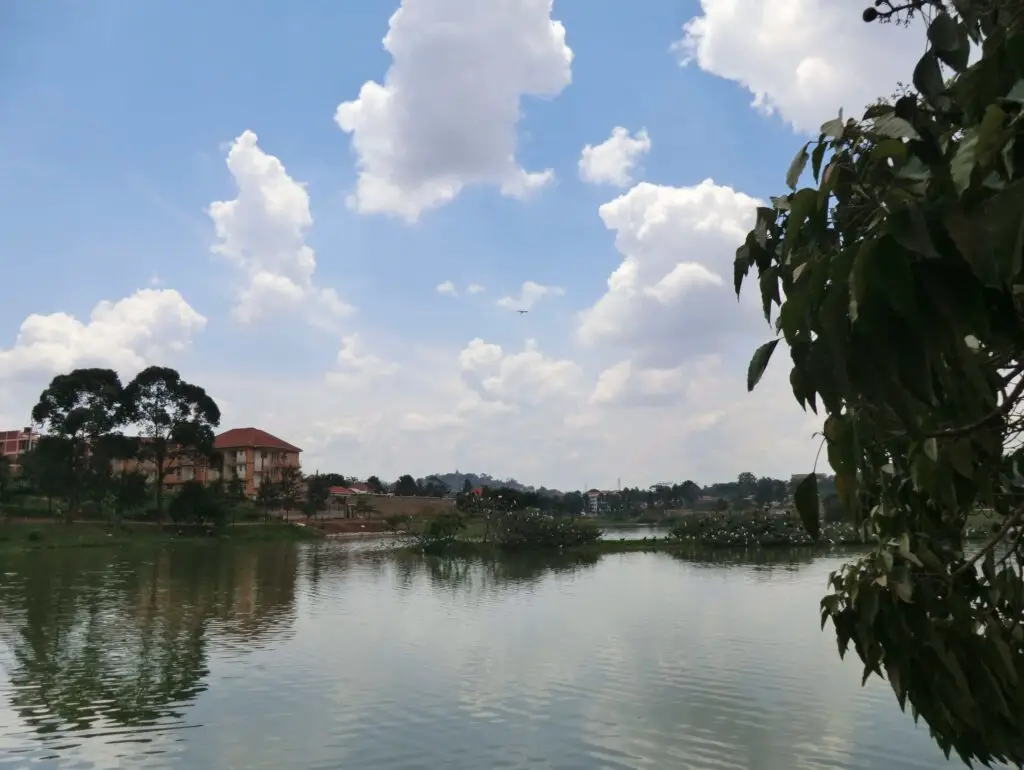
You can enjoy the relative tranquility of the area (at least compared with the rest of Kampala;-) and watch huge numbers of cattle egrets populating the small islets in the lake. The lake sits directly to the south-west of Mengo Hill.
Bulange – Buganda Parliament
The active parliament of the Buganda Kingdom can be toured with a guide, who will share information on the continuing importance of the Kingdom in today’s government. The building dates to the 1950s and was apparently inspired by the Stormont building in Belfast. The statue in front of the building depicts Kabaka Mutebi II, the current king of Buganda.

The Bulange is connected to Mengo Palace by Kabaka Anjagala Road, which used to serve as a processional road between both complexes. While walking down the road, have a look for an enclosure containing two giant tortoises, brought to Uganda by a royal retainer from the Seychelles in 1945.
Namirembe Cathedral and Rubaga Cathedral
Finished in 1919, the Anglican Namirembe Cathedral is the oldest Cathedral in the country. While the building itself is worth checking out, the main reason to come here are the views of central Kampala from Namirembe Hill. It’s about one kilometre or 0.6 miles north of the Bulange.
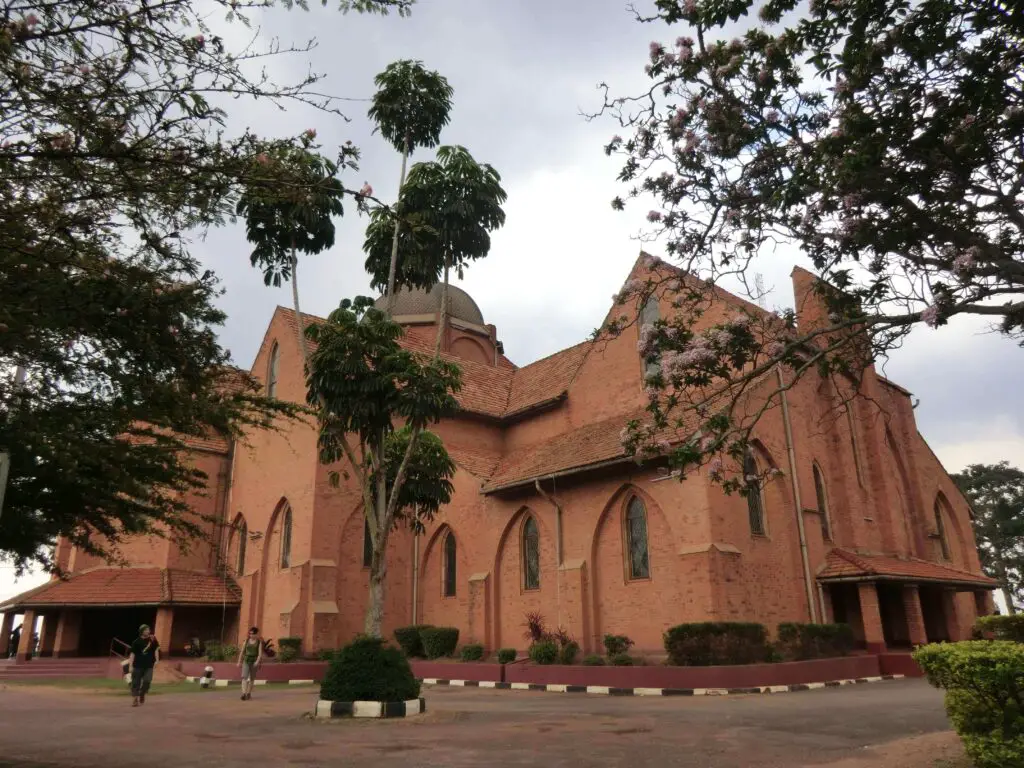
From an architectural point of view, I found the Neo-Gothic façade of the Roman Catholic Rubaga Cathedral (aka. St. Mary’s Cathedral) to be more attractive. This one can be found about a kilometre or 0.6 miles north-west of Kabaka Mwanga’s Lake.
Other things to see in Kampala
The city’s government quarter makes for a nice walk around town. You can check out the Parliament of Uganda, the National Theatre and the Independence Monument.
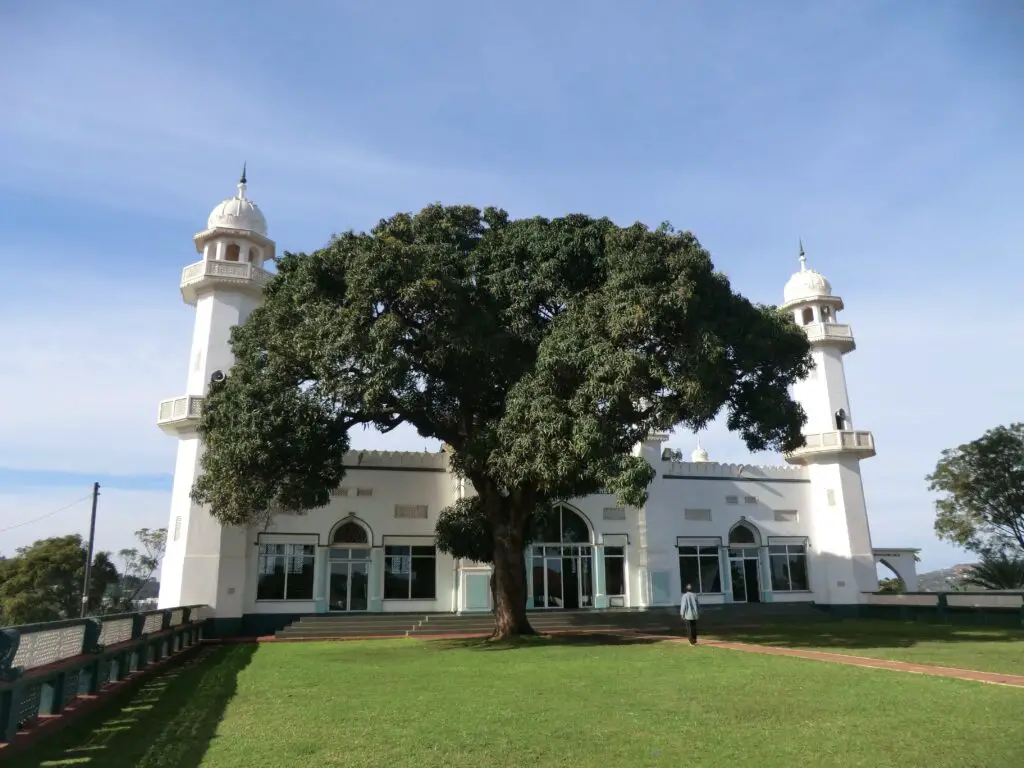
Other interesting destinations near the centre are the Shri Sanatan Dharma Mandal Hindu Temple to the east of the New Taxi Park, as well as the small, photogenic Kibuli Mosque on the hill south-east of the parliament.
Map of Kampala
All the sights mentioned above can be found in this map of Kampala, which also includes some potential places to stay at.
Guided Tours of Kampala
If you want to explore Kampala without the hassle of sorting out your own transport, you might want to consider taking a guided tour. There are various options available, like this half-day tour of the city, including transport, a private guide and admission to top sights like Mengo Palace and the Uganda Museum.
Another option is this tour of the historical sites of Kampala, including the Kasubi and Wamala Tombs. Foodies might like this nighttime tour of Kampala Street Food by boda-boda. Have a look below for more options.
Practicalities
How to get to Kampala
As the countries capital and biggest city, you can find buses and matatus (shared taxis) going to Kampala from basically every other part of the country, and you’ll likely be constantly asked whether you want to go there by entrepreneurial minibus drivers.
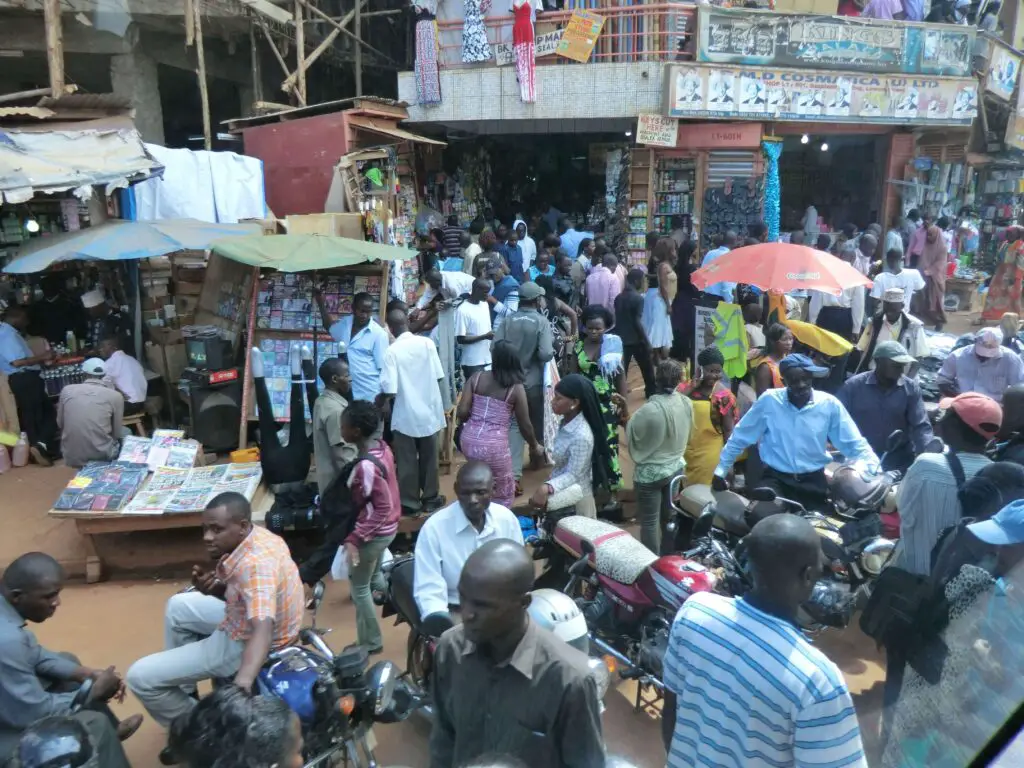
There are two main points of departure for matatus in the city: Minibuses from the Old Taxi Park mainly go to destinations around town, while those from the New Taxi Park go to cities all over Uganda. Both can be found pretty close to each other halfway between the government quarter and Old Kampala Hill, home to the universally visible Gaddafi National Mosque.
For destinations that are further afield, bigger buses would be the speedier and more comfortable (albeit slightly more expensive) option. Depending on the company, these leave from different locations around the city. One of the biggest bus terminals is Kisenyi Bus Terminal, directly to the south of the New Taxi Park.
How to get around in Kampala
The ubiquitous matatus are the easiest way to get around Kampala, and you can reach every part of the city from the Old Taxi Park (see ‘How to get to Kampala’ Section). Just ask around and people will direct you to the right place (likely by grabbing your hand and pulling you to the correct matatu).
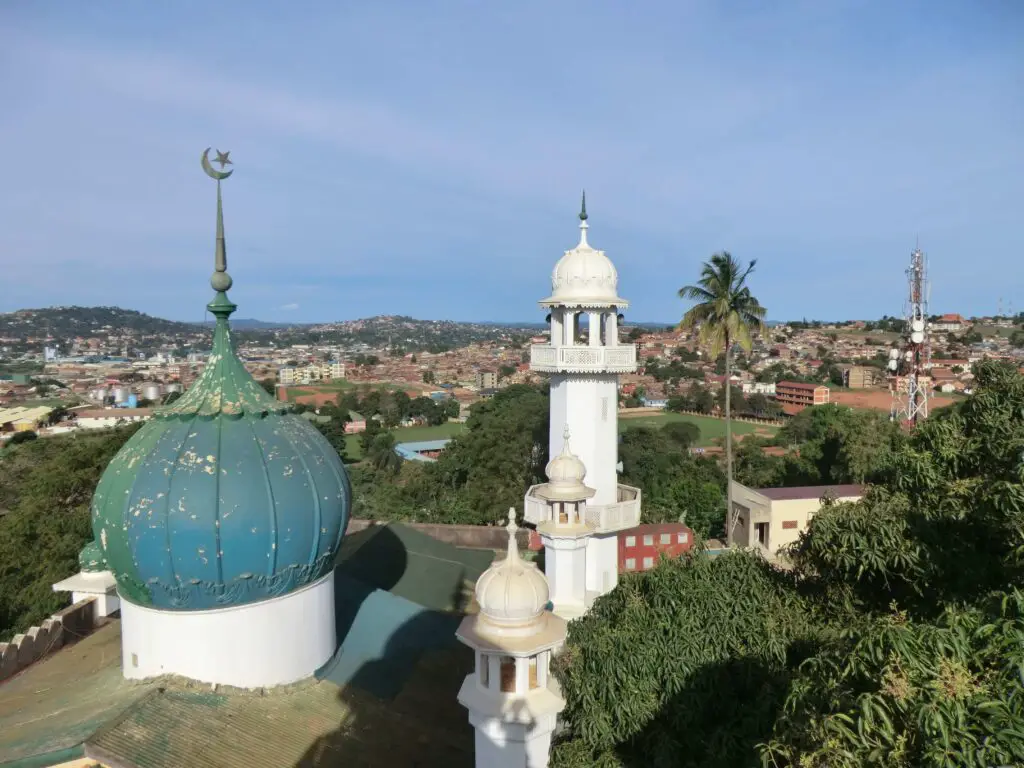
For shorter distances, boda-boda‘s (motorcycle taxis) are a good option, especially as they can and will wave through inevitably gridlocked traffic.
Of course, walking is also an option – just don’t expect any cars to stop for you, even at the few traffic lights in town, and always keep an eye on where you’re stepping, so you don’t drop into one of the open manholes, which have a tendency to suddenly appear in the middle of the sidewalk.
Where to stay in Kampala
There’s no shortage of places to stay in the city-centre. Bushpig Backpackers is a good option if you’re on a budget, with both dormitories and private rooms available.
Koki Hotel is a nice, centrally located midrange hotel offering great value for money, while the impeccable 5-Star Kampala Serena Hotel is the city’s best luxury hotel.
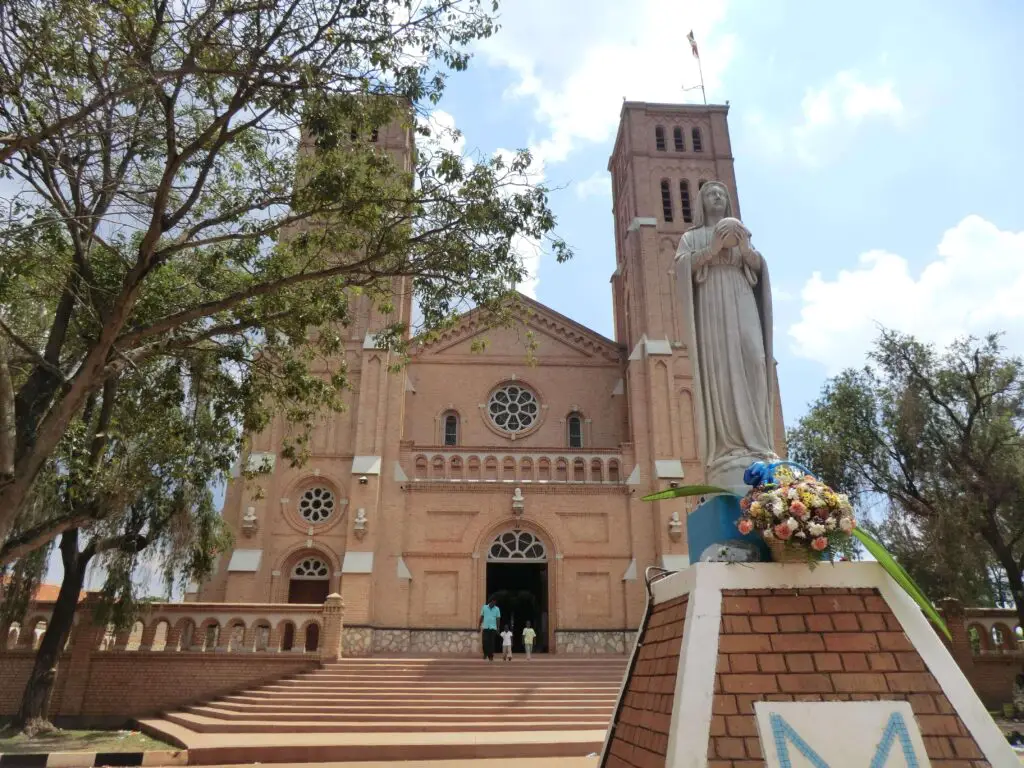
Have a look at the map above for more options.
Where to go next
Entebbe, the laid-back gateway to Uganda
Jinja, the country’s adventure capital and home to the Source of the Nile
